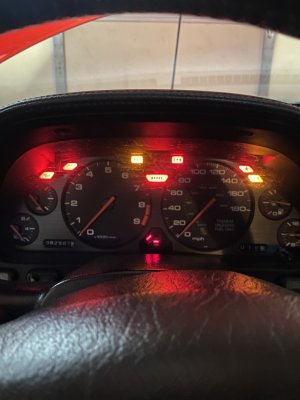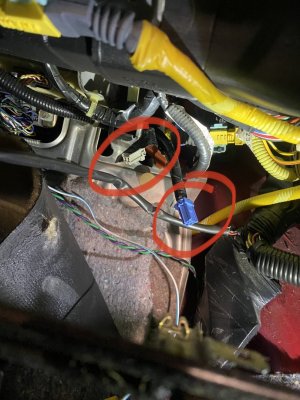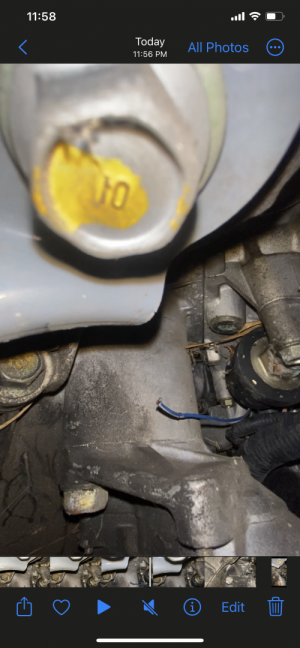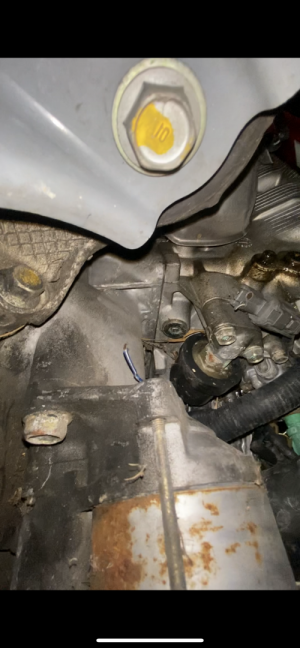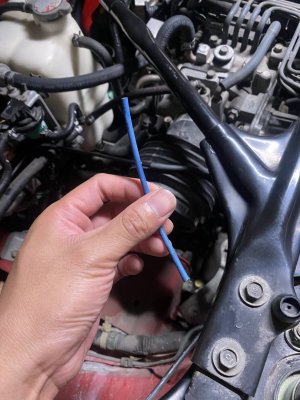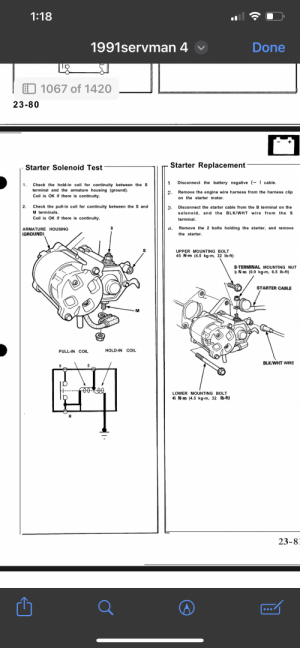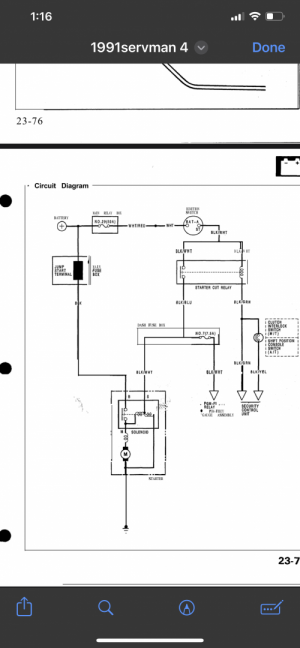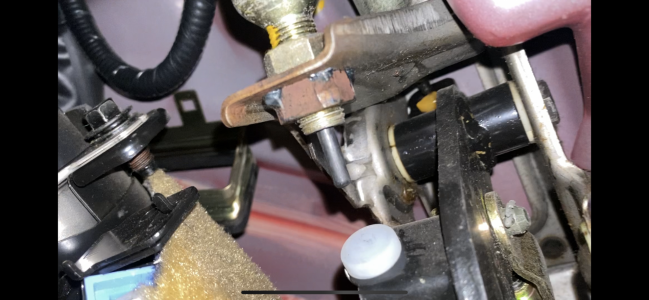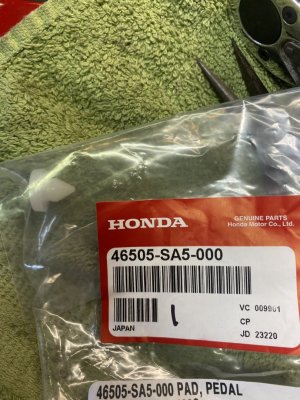First the easy bit. That blue plug is likely the service check connector which you short to trigger the display of error codes - it is not plugged in to anything so it is not the cause of your problems.
Here is a picture of the factory starter cut relay after the dash has been removed. After removing the cover under the glove box along with the glove box you can probably just barely see it. Getting your hands on it is a completely different hell (have bandages available).

The other plug is a bit of a mystery. You would need to retrieve the color codes on the wires to start guessing at its function. It looks like a two cavity plug which makes me think it is not the starter cut relay.
If you were driving and it just died, then I think
@docjohn has a good suggestion that the problem might be originating with the ignition switch on the back of the ignition key lock cylinder. With a modest amount of contortion, it is fairly easy for a younger person to access and remove the switch for testing
Go here and download the 1991 factory service manual
As our NSX continues to age, it will become more and more important for member to be able to service their cars. Most Acura dealers no longer employ technicians who are familiar with the NSX, as the original techs are long gone or retired. As...

www.nsxprime.com
It will tell you how to remove the switch and test it (starts page 23-72). If the switch fails the tests, sometimes you can rehabilitate it by popping off the white cover to expose the contacts which can be cleaned with some IPA and #600 Si O2 paper. New switches are not particularly expensive - Rock Auto has them.
If the ignition switch tests good, then the problem is more complicated. The factory starter interlock can prevent operation of the starter motor; but, it cannot kill the engine once it is running so a problem with the starter interlock does not really jive with your description of events. In you photo of the dash, I notice that the MIL/CEL is not lit up. When you first turn the ignition key to the run position (do not engage starter), the MIL/CEL should light up for 3 or 4 seconds which confirms that the ECU has powered up. You should also hear the fuel pump run for 3 - 4 seconds while it primes the fuel system. A failing ignition switch can block the MIL/CEL and prevent the prime cycle. If the ignition switch is good then there is some other problem and I would be looking at that aftermarket alarm system wiring.
In the OEM vehicle wiring, the security system can only block the operation of the starter motor. Once the vehicle has started the security system cannot stop the engine - that is a safety feature. If your aftermarket security system was wired in so that it blocks both the starter motor and the main EFI relay (which controls the ECU and the fuel pump) then a problem with the security system could have killed the engine and prevented it from cranking and starting. Because of safety issues that is a bad practise; but, people on Prime have discussed making this modification.
If your problem is not the ignition switch, then I fear you may be reduced to digging out the wiring diagrams for the starter motor and the main EFI relay circuit and tracing and testing to figure out why they are not operating / where the interconnection point with your aftermarket alarm was.
For reference,
- the starter motor control / interlock system is described starting on page 22-77 of the manual
- the best place for a wiring diagram which shows the main EFI relay which controls the ECU and the fuel pump is in the wiring diagrams which start of 23-350 - #14
Two final hale Mary's
- go check the battery post clamps. More than a few NSXs have been disabled because the battery post clamps have come loose. Honda battery post clamps are made from recycled soup cans and are easily stretched and damaged if they have been over tightened
- do you know how to use a remote starter switch? If so, connect one end to the jump start terminal in the engine relay box and the other to the solenoid on the starter motor. Press the switch and the starter motor should spin because this by-passes everything. If you turn the ignition switch to the run position and the ECU is powering up this should start the engine. This is my back-up plan for dealing with a failure of the clutch interlock switch (a different problem).


